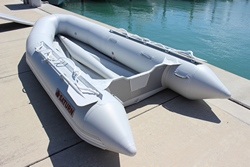Buyer's Guide to Inflatable
Boats
Choosing the Right Size Inflatable Boat
When deciding on the perfect inflatable boat, there are several key factors you should consider:
- Your budget for a new inflatable boat.
- Storage options for the boat when it’s not in use.
- The method of launching the boat into the water.
- The number of people who will be using the boat.
- The choice of outboard motor.
Your Budget for a New Inflatable Boat
Saturn and BoatsToGo.com are known for offering some of the most cost-effective options in the US market. Our competitive pricing is the result of a direct-to-customer sales model, contrasting with other major brands that operate through a network of dealers. These dealerships add significant markups to ensure profits across various intermediaries. Prices for Saturn inflatable boats range from as low as $499 to $2000.
Overall, opting for the largest inflatable boat within your management capability is advisable. A larger size equates to increased cargo capacity, a more comfortable journey, and extra space for additional passengers. Size directly influences the price; however, other factors should also be considered.
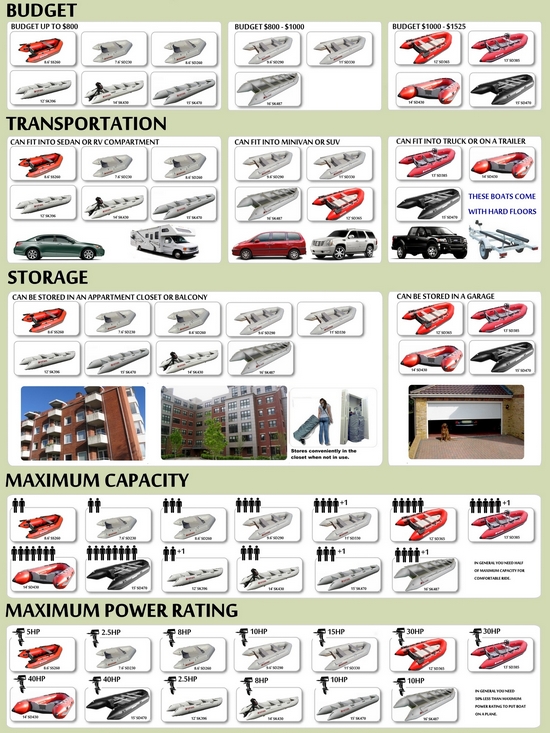
Where to Keep Inflatable Boat When Not in Use?
Storing an inflatable boat properly when it’s not being used is crucial to extend its lifespan. There are mainly two scenarios you might find yourself in: either keeping the boat in the water for extended periods or taking it out of the water after use.
Leaving the Boat in Water
Constant water exposure isn’t ideal for any inflatable boat. If left in water, the hull will be susceptible to barnacles, and algae growth on the bottom is inevitable. Inside the boat, issues like rainwater accumulation and mildew can occur. The tubes, when exposed to direct sunlight and heat for extended durations, can deteriorate, especially for PVC boats. These boats do not fare well under prolonged exposure to heat, humidity, and sunlight compared to their Hypalon fabric counterparts, which are more durable but also more expensive. Opting for a Hypalon fabric boat is advisable if you intend to live aboard, tow it worldwide, or leave it uncovered at a dock. The reality is that PVC boats have inherent limitations under these conditions, and any claims contrary to this are misleading.
Removing the Boat from Water
When not in use, and taken out of the water, there are two further choices: either deflate and fold the boat for storage or keep it on a trailer.
Deflated and Folded for Storage
Ideal for occasional use, storing a deflated PVC boat requires a well-ventilated, shaded area to prevent damage. Storing a wet, folded boat in a hot, enclosed space, such as a metal box in a humid climate, can lead to moisture infiltrating the wood and glued parts, like the transom and oarlocks, causing damage over time.
Stored on a Trailer
For those opting to keep the boat on a trailer, it’s advisable to store it in a garage or under a carport, or at the very least, cover it with a tarp to protect it from the elements. Direct exposure to sunlight and other harmful elements can significantly reduce the boat’s lifespan. If a shaded storage area is not an option, using a boat cover is essential to protect the PVC material.
Storage Considerations Based on Your Living Situation
For individuals residing in condos, those with limited storage space, or those planning to use the boat in conjunction with an RV, an inflatable boat with an air floor is recommended for its compactness. The KaBoat, a small, portable boat variant with a motor transom, is an excellent choice for limited spaces due to its portability.
If ease of assembly is a priority, consider a boat with a high-pressure air floor. For those needing to transport the boat in a sedan, the KaBoat is the most portable solution. If you have an SUV or minivan, the KaBoat or a larger SD series motor boat, like the up to 9.6′ long SD290 dinghy, could be suitable. Truck owners with garage space might opt for an 11′ or larger inflatable boat for additional capacity and comfort.
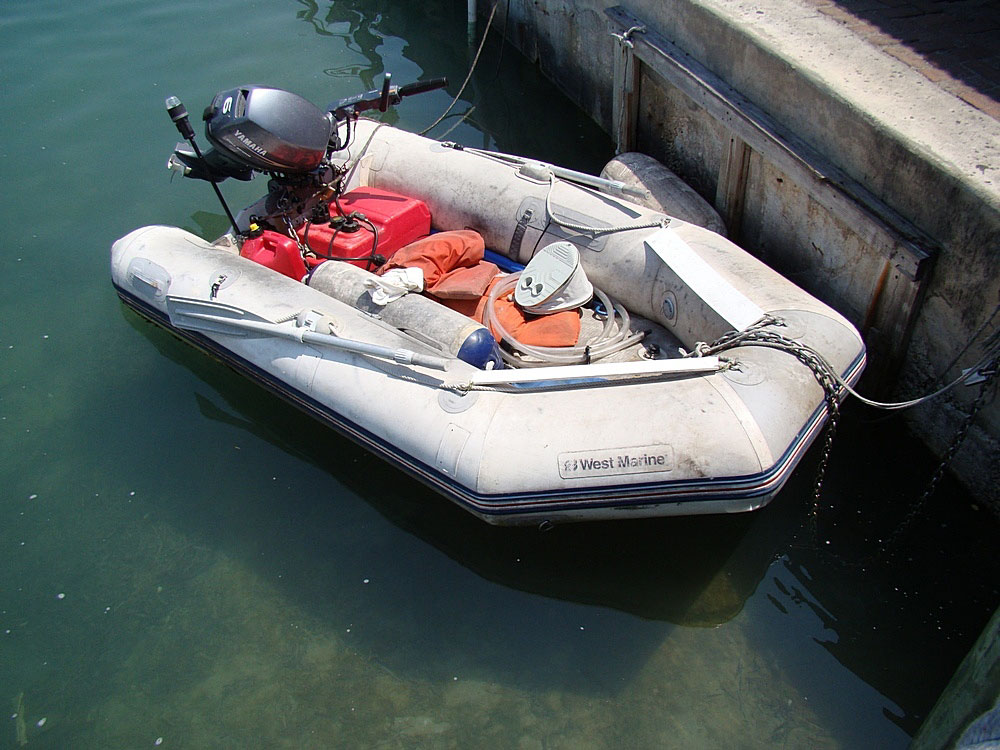
How Many People Can Fit in an Inflatable Motor Boat?
The capacity for passengers in Saturn inflatable boats is clearly indicated on the technical specifications section of each boat model’s webpage. This number represents the maximum safe occupancy for transporting individuals from one point to another, such as from a main vessel to shore or during emergency evacuations. For instance, the 11′ SD330 model can accommodate up to 5 people, with seating arrangements on both the front and rear benches as well as in the front of the boat. While it’s possible to fit more individuals by having them sit on the boat’s tubes, such a configuration is less comfortable, especially for prolonged activities like fishing. For a more enjoyable experience without the discomfort of crowding, it’s recommended to halve the maximum capacity. Thus, for extended periods of use or fishing expeditions, two to three people of medium build can comfortably occupy this boat size.
Choosing the Right Outboard Motor
While most inflatable boats are equipped with rowing oars, suitable for calm waters like lakes and slow-moving rivers, there are options for those seeking more speed. An electric motor can offer a modest speed increase and assist with rowing, making it ideal for leisurely activities. However, for faster speeds, longer distances, or navigation in larger rivers, seas, or windy conditions, a gasoline outboard motor is recommended. Newer 4 stroke motors, although heavier, are preferable over the older 2 stroke versions, which are lighter and can still be found second-hand. Each Saturn inflatable boat model comes with a recommended maximum motor power rating in its specifications, indicating the highest safe power level for optimal performance under standard conditions. You don’t need to reach the maximum motor power to achieve fast speeds; utilizing about 75% of the maximum capacity can suffice for efficient and speedy travel. For example, a 9.9HP motor can efficiently propel an 11′ SD330 boat rated for a 15HP motor. Similarly, a 25HP motor can achieve speeds of around 20 miles per hour on a 15′ SD470 boat, even though it can technically accommodate up to a 40HP motor. Opting for a motor with a lower power rating can save on costs, weight, and fuel consumption. For larger boats, especially those over 13′ with a hard floor and a larger motor, consider whether you’ll have assistance for assembling the boat, installing the motor, and launching or retrieving it from the water.
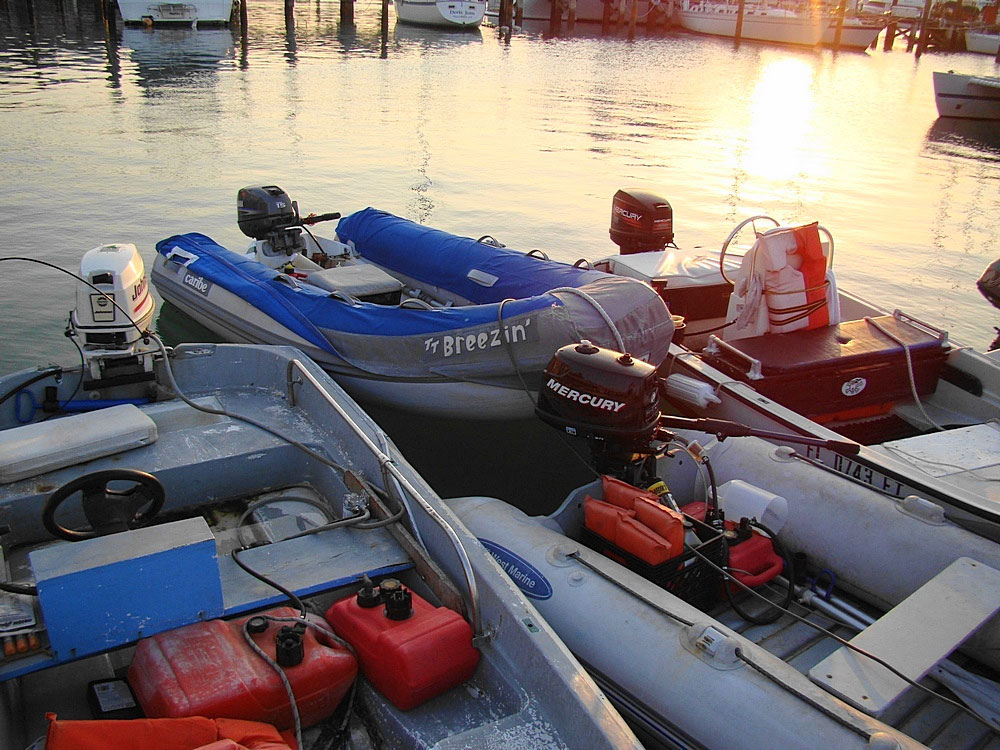
Why Choose a Saturn Inflatable Boat?
The market for inflatable boats is crowded with options. From bargain deals on platforms like eBay, Amazon, and Walmart to an array of new and established brands, consumers have a plethora of choices. Everyone aims to save money while securing the best product at the lowest price. It’s widely acknowledged that the majority of inflatable boats sold in the U.S. are manufactured in China. This isn’t inherently a drawback as the quality of Chinese manufacturing has seen significant improvements. Yet, there are critical factors to consider.
Although craftsmanship in China is on the rise, the explosion of new manufacturing facilities poses its own set of challenges. Since the construction of most inflatable boat transoms involves a complex hand-gluing technique known as “chemical cold welding,” the process requires more than merely applying adhesive. It’s a sophisticated craft that demands attention to detail—a nuance often overlooked by numerous Chinese factories due to inexperience or a rush to produce at minimal costs for competitive pricing.
Taking shortcuts can lead to premature boat failure. For instance, the durability of chemical adhesives is greatly enhanced in low humidity conditions, necessitating air-conditioned assembly areas—a measure not all factories are willing to implement. This oversight may not become apparent until years after purchase, by which time the manufacturer may no longer be accountable
Saturn’s Commitment to Quality
Saturn inflatable boats are assembled in environments with controlled humidity to maximize longevity, halting production during the humid months of July and August—unlike other manufacturers that operate year-round.
The skill of the assembly staff is another critical aspect. Years of experience are required to master the application of glue and the precise heating needed to activate it. Overapplication of glue or incorrect heating can compromise the boat’s structure. Interestingly, Saturn believes that women, having a keen eye for detail, are best suited for this work, hence employing an all-female assembly team.
Moreover, Saturn boats differentiate themselves by eschewing plastic components like handles and rope holders in favor of more durable PVC-to-PVC bonds, addressing the common failure points in cheaper models.
Despite initially operating in South Korea, Saturn moved production to China to keep prices competitive, ensuring quality control through South Korean management. The boats are crafted from superior German Heytex PVC and South Korean drop-stitch fabric, allowing Saturn to offer an extended warranty of up to 5 years compared to the 1 or 2 years typically provided by other brands.
Value and Reliability
Inflatable boats are a significant investment, often starting at around $500. It’s crucial to choose a brand with a stable history and the likelihood of being around in the future for support and parts. Saturn has been in the market since 2004, establishing a track record of reliability and commitment to making boating accessible without compromising on quality. This philosophy allows Saturn to offer well-crafted boats at reasonable prices, backed by a warranty of up to 5 years, standing out in a marketplace filled with ephemeral brands and uncertain quality
What makes SATURN brand of inflatable boats different from other brands?
Saturn inflatable boats distinguish themselves in the market through several unique design features and qualities that cater to both novice and experienced boaters. Here’s an in-depth look at what sets Saturn apart:
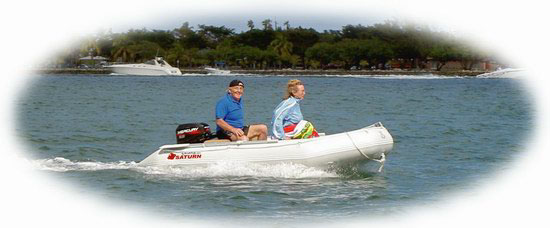
Hull Construction
Saturn boats are constructed using 1100 denier heavy-duty PVC fabric, renowned for its durability and resistance to abrasion and impact. The hull includes an inflatable keel equipped with a rub strake protector which enhances the vessel’s directional stability and control. The transom, made from marine-grade plywood, is built to withstand the harsh marine environment. Additionally, Saturn boats feature a double layer of fabric on the bottom of the tubes for extra protection and are equipped with heat welded seams for improved seam integrity and longevity. A one-way drain valve with a plug is also standard, facilitating easy removal of any water that enters the boat.
Stability and Safety
The low center of gravity in Saturn inflatable boats significantly reduces the risk of capsizing. This stability is beneficial whether the boat is stationary or in motion, providing a secure platform for activities like fishing and allowing children to move about safely. The boat’s design also simplifies mooring processes, making it ideal for both beginner and experienced boaters. The multiple independent airtight compartments in the buoyancy tubes further enhance safety; even if one compartment deflates, the others remain inflated, keeping the boat afloat and operational.
Storage and Portability
Saturn inflatable boats can be deflated and folded into a compact size, roughly equivalent to a medium-sized bag, which facilitates easy storage and transportation. These boats can be conveniently stowed in a car trunk, a storage locker, or even tucked away under stairs or in a garage corner, ready for the next adventure.
Ease of Use
Launching and beaching a Saturn boat is effortless due to its lightweight nature, which is up to three times lighter than comparable rigid boats. This feature makes it simple to pull the boat onto a beach or into the water. Additionally, the boats are equipped with a roll-up air floor that is designed for quick and easy assembly. Just unroll, inflate using a foot-pump or electric pump, and the boat is ready to go.
Durability and Maintenance
Saturn boats are noted for their sturdy construction. Features like welded rubbing strakes and transom, cold welded seams, and reinforced cone ends ensure a robust build that withstands frequent use. The boats are coated with a top industry-grade PVC material for added durability and strength. This material, exclusive to Saturn’s second-generation models, significantly extends the life of the boat.
Cost-Effectiveness
Saturn boats are designed to be an economical option for those new to boating or operating on a moderate budget. The boats require minimal maintenance and are powered by small, cost-effective outboard engines. The initial purchase price, combined with low ongoing costs, makes Saturn an appealing choice for budget-conscious boaters seeking longevity and reliability in their boating experience.
Overall, Saturn inflatable boats provide a versatile, safe, and economic solution for those looking to explore boating with an easy-to-use, durable, and portable vessel.
How SATURN inflatable boats are different from other brands?
Saturn Inflatable Boats are crafted from high-quality materials comparable to those used by renowned, higher-priced inflatable boat brands. The construction quality of Saturn boats often exceeds that of these well-known brands, which are typically found in marine retail stores. These boats are manufactured in Korea by a leading producer of inflatable watercraft, ensuring a high standard of workmanship and material use.
Key Features of Saturn Inflatable Boats:
- Precision Construction: The boats feature immaculately clean, heat-welded seams without any protruding glue, enhancing both aesthetics and durability.
- Enhanced Durability: Each boat includes a double-layer of fabric at the base of all tubes, offering additional protection and robustness.
- Superior Material: Saturn uses an extra-thick 1100 Dtex fabric supported by polyester, which is significantly thicker than the materials used by some other prestigious brands.
- Innovative Design: The air floors in Saturn boats are flat and rigid, designed not to bend at the front, unlike many competitors’ models.
- Safety Measures: A specialized safety valve is incorporated to prevent the risks associated with over-inflation.
Cost-Effectiveness:
Saturn Inflatable Boats are priced more affordably due to several strategic business practices:
- Direct Importing: Saturn imports directly from the manufacturer, eliminating the costs associated with middlemen.
- Online Sales Model: By operating primarily online, Saturn avoids the high overhead costs associated with physical retail stores.
- Minimal Marketing Spend: Unlike major brands, Saturn does not allocate a large budget to marketing, opting instead to pass these savings on to customers.
- Streamlined Distribution: The company does not maintain an extensive network of dealers and retail outlets, further reducing costs.
- Warranty Options: Saturn offers a 2-year warranty with the option for customers to purchase an additional 3-year extension at a modest price of $99, allowing for up to 5 years of manufacturer warranty without the embedded cost of extended warranty periods typically built into retail pricing.
Customer Feedback and Referrals:
Many customers who have previously owned boats from brands like Zodiac, Avon, Sea Eagle, Mercury, and West Marine have remarked that Saturn boats are of equal or superior quality. Frequent customer feedback highlights that Saturn boats exceed expectations in quality. This high level of customer satisfaction leads to approximately 50% of sales being generated through referrals by contented Saturn boat owners.
Price Match Guarantee:
Saturn is committed to offering the lowest prices on inflatable boats, kayaks, and paddleboards in the USA. Through their BoatsToGo platform, they promise to match or beat the prices of similar products found in other active online and retail stores. Note, however, that this price match guarantee does not extend to products listed on eBay or Craigslist.
Why buy a Saturn inflatable boat? Are they better than the rest?
When considering the purchase of an inflatable boat, it’s crucial to weigh quality against cost. Saturn inflatable boats, distributed by BoatsToGo, stand out for their consistent quality and reliable construction, backed by decades of industry experience. BoatsToGo has been a trusted importer of these boats from South Korea since 1999, ensuring a steady supply and robust support for all boating needs, including comprehensive warranty services.
Many emerging inflatable boat brands may offer lower prices, but these savings can be deceptive. Numerous new manufacturers, particularly from regions with less rigorous manufacturing standards like some areas of China, often lack the proper facilities and expertise. They might skip essential steps such as humidity control during the gluing process, crucial for the durability of the boat. This oversight can lead to boats that appear fine initially but deteriorate rapidly, often within a year.
In contrast, Saturn boats are meticulously assembled to ensure lasting quality. For example, it’s a little-known fact that boats crafted by skilled female workers tend to exhibit exceptional craftsmanship, a standard practice for Saturn. Additionally, while many bargain brands use inferior materials like cheap PVC and provide inadequate warranty support, Saturn boats are made with high-quality materials and are supported by reliable customer service. BoatsToGo ensures that replacement parts and services are readily available, a commitment that many smaller or less reputable vendors can’t match.
Saturn inflatable boats are designed for convenience and versatility. They can be quickly set up for a day of exploration on various water bodies—be it a bay, river, or lake. Once deflated, these boats compactly fit into the trunk of a car, resembling the size of a medium luggage bag, making them ideal for those who appreciate ease of storage and transport.
These boats are particularly suited for fishing enthusiasts and nature lovers. With the ability to move beyond the water’s edge, users get closer to where the fish are or immerse themselves in natural surroundings. The optional hydrofoil attachment enhances performance, allowing the boat to glide over water at high speeds and make hands-free maneuvers.
For those who are budget-conscious yet dream of boat ownership, Saturn offers a cost-effective solution. The affordability of an inflatable boat compared to traditional hard-hull boats, combined with their portability, makes them an attractive option for individuals who enjoy occasional outings and do not want to bear the maintenance or storage costs associated with larger vessels.
In summary, Saturn inflatable boats provide a perfect blend of affordability, quality, and convenience, making them an excellent choice for both seasoned sailors and casual weekend adventurers.
What are the Factors to consider before buying an inflatable boat?
When considering the purchase of an inflatable boat, several key factors should guide your decision to ensure it suits your specific needs and preferences:
Intended Use:
The primary activity you plan to use the boat for significantly impacts the type of inflatable boat you should consider. Different activities require different features:
- Fishing: Choose your boat based on where you will fish. For offshore fishing in shallow saltwater, a sport boat around 12 feet long is ideal, particularly if it’s a rigid inflatable boat (RIB). For lake fishing, a smaller, more maneuverable inflatable kayak may suffice.
- Diving: Stability and space are critical for divers. A boat with a rigid floor can handle more equipment weight and is usually more stable.
- White Water Rafting: You’ll need a highly durable boat designed to withstand rapid currents and collisions with rocks.
- Leisure Paddling: For calm rivers or lakes, a simple raft or a basic inflatable boat is adequate, focusing on comfort and ease of use.
- Racing and Skiing: Look for streamlined boats designed for speed and maneuverability, often featuring a more rigid structure.
Capacity:
It’s important to consider how many people will typically use the boat. The boat should not only accommodate the number of users but also provide enough space to ensure it isn’t overcrowded, particularly for activities like fishing where movement and space to handle gear are necessary. Opt for a larger size to comfortably fit all passengers and equipment.
Floor Type:
- High-Pressure Air Deck: Suitable for those who need to transport the boat frequently or have limited storage space. Air decks are lighter and quicker to set up and take down, making them ideal for users who plan to inflate and deflate the boat regularly.
- Plywood Deck: Best for scenarios where the boat will remain inflated for extended periods, such as during seasonal use at a lake house. Plywood floors offer enhanced stability and durability but are heavier and require more storage space.
Each of these factors plays a crucial role in the selection process, helping you find an inflatable boat that not only meets your specific recreational or professional needs but also enhances your overall experience on the water.
What makes inflatable boats are higher buoyancy than regular boats?
Inflatable boats stand out in the realm of watercraft for several compelling reasons, drawing attention not only for their affordability but also for their myriad advantages over traditional fiberglass vessels. These inflatable marvels, whether in the form of kayaks, KaBoats, or paddleboards, offer an array of benefits stemming from their unique construction using PVC air pockets.
 One of the primary advantages lies in their exceptional buoyancy, a critical factor in any watercraft’s safety. Unlike their fiberglass counterparts, inflatable boats boast remarkable buoyancy, largely due to the tubes or collars that constitute their structure. These tubes not only add to the overall width of the vessel but also aid in distributing weight evenly, enhancing stability on the water. This expanded width allows for the dispersal of buoyancy across a larger area, rendering inflatable boats significantly more stable, especially when navigating through waves. Upon encountering waves, the compressibility of the air within the tubes acts as a cushion, mitigating the impact and ensuring a smoother ride.
One of the primary advantages lies in their exceptional buoyancy, a critical factor in any watercraft’s safety. Unlike their fiberglass counterparts, inflatable boats boast remarkable buoyancy, largely due to the tubes or collars that constitute their structure. These tubes not only add to the overall width of the vessel but also aid in distributing weight evenly, enhancing stability on the water. This expanded width allows for the dispersal of buoyancy across a larger area, rendering inflatable boats significantly more stable, especially when navigating through waves. Upon encountering waves, the compressibility of the air within the tubes acts as a cushion, mitigating the impact and ensuring a smoother ride.
Moreover, inflatable boats exhibit a distinct advantage in terms of their resistance to tipping. Unlike traditional V-hulled boats, inflatables sit flat on the water surface, boasting a low center of gravity that enhances their resistance to capsizing. This inherent stability makes them particularly adept at handling rough water conditions, a trait invaluable in rescue operations where stability can mean the difference between success and disaster.

Another noteworthy feature of inflatable boats is their construction with multiple chambers, a design aimed at safeguarding against punctures or deflations. This ensures that even if one chamber is compromised, the vessel’s overall integrity and buoyancy remain largely unaffected. Such redundancy not only enhances safety but also instills confidence in users, whether they are leisure enthusiasts or professionals operating in demanding environments.
In fact, many commercially available inflatable boats and kayaks adhere to construction standards trusted by professionals in rescue and military organizations. This shared technology underscores the reliability and versatility of these inflatable crafts, whether they are patrolling borders, navigating icy waters, or simply providing leisurely enjoyment on a tranquil lake.
PVC vs. Hypalon Inflatable Boats.
When delving into the world of inflatable boats, kayaks, and similar watercraft, it’s common to encounter fervent debates over the superiority of Hypalon versus PVC construction. While many voices champion Hypalon as the undisputed choice, my extensive experience navigating diverse water bodies has revealed a more nuanced reality. Often, the issues attributed to PVC inflatable boats stem not from inherent flaws but from neglect and inadequate maintenance.
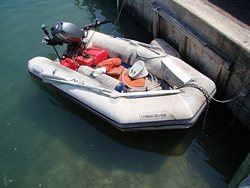 In numerous instances where PVC boats have disappointed their owners, two recurring culprits emerge: under-inflation and neglect. Proper care for PVC inflatables demands attention to detail, particularly in storage. It’s imperative to shield them from prolonged exposure to sunlight and humidity, which can compromise the adhesive bonds crucial for their integrity. Storing them in well-ventilated, shaded areas and covering them with appropriate materials can significantly extend their lifespan.
In numerous instances where PVC boats have disappointed their owners, two recurring culprits emerge: under-inflation and neglect. Proper care for PVC inflatables demands attention to detail, particularly in storage. It’s imperative to shield them from prolonged exposure to sunlight and humidity, which can compromise the adhesive bonds crucial for their integrity. Storing them in well-ventilated, shaded areas and covering them with appropriate materials can significantly extend their lifespan.
While Hypalon boasts better resistance to UV rays and hydrocarbons compared to PVC, it’s not impervious to environmental factors. However, the construction process for Hypalon entails meticulous scuffing and hand-gluing, ensuring airtight seams. Yet, even new Hypalon boats allow for a 15% air loss over 24 hours, whereas PVC counterparts permit only 7%.
Maintaining optimal air pressure is critical for both types of inflatables. Regular checks ensure peak performance, particularly in fluctuating temperatures. Additionally, it’s noteworthy that DuPont ceased Hypalon production in 2010, leading to newer iterations predominantly composed of neoprene/CSM blends. Military-grade specifications often set the benchmark for Hypalon products, which may not directly translate to recreational brands.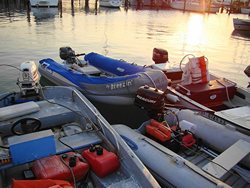
Despite the labor-intensive construction of Hypalon inflatables, PVC has evolved technologically, offering UV-stabilized compositions with added protectants. While PVC’s glue or weld joins demand meticulous application, when executed correctly, they offer robust durability under sunlight. In fact, over 90% of inflatables on the market today are PVC-based, with notable brands like “Zodiac” using trademarked materials like “Strongan.”
Ultimately, reputable manufacturers offer comparable warranties for both materials, with PVC often favored by recreational users for its cost-effectiveness and ease of patching. In my circle of inflatable boat enthusiasts, loyalty spans various materials and models, united by a shared commitment to diligent maintenance and care. Proper inflation remains paramount, guarding against punctures, delamination, and gradual air loss.
In conclusion, navigating the myriad opinions surrounding inflatable boat constructions necessitates a nuanced understanding of their strengths and vulnerabilities. By prioritizing meticulous maintenance and mindful care, buyers can make informed decisions to maximize the longevity and enjoyment of their watercraft. Happy boating!
Inflatable air deck floor Vs. hard floor.
When considering purchasing an inflatable boat, one of the primary decisions you’ll face is selecting the type of flooring that best suits your needs. Manufacturers offer a range of options to cater to different preferences, ensuring users can maximize functionality and enjoyment. The choice between an inflatable air deck floor and a hard floor, typically made of plywood or aluminum, depends on various factors including intended use, convenience, and personal preferences.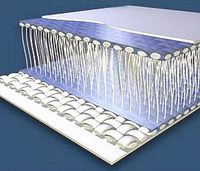
The inflatable air deck floor, constructed using a drop stitch technology, offers several advantages. This type of flooring consists of two layers of synthetic fabric held together by small stitches. When inflated, air fills the space between these layers, providing rigidity comparable to plywood or aluminum floors without the added weight. Additionally, the flexible fabric absorbs impact from the water, offering cushioning and stability. Many manufacturers claim that inflatable air floors are more resistant to impact and vibrations compared to their hard floor counterparts.
For those concerned about the durability of an air floor, there are simple solutions. Adding a layer of laminate flooring or carpet, readily available at local hardware stores, can provide an extra level of protection at minimal cost. This additional layer not only offers peace of mind but also simplifies cleaning and maintenance.
However, the choice between an inflatable air deck floor and a hard floor ultimately depends on individual preferences and usage patterns. If storage space allows for keeping the inflatable boat inflated for extended periods, the benefits of an air floor may not be as significant. Ultimately, the decision rests with the buyer, with the assurance that all Saturn inflatables and flooring options are covered by BoatsToGo.com Warranty for up to 5 years, providing added peace of mind.
What is how pressure air deck floor for inflatable boat, raft, and inflatable kayak?
The High Pressure Air Deck Floor for inflatable boats, rafts, and kayaks is a remarkable innovation in watercraft design. Constructed from a specially engineered drop-stitched PVC fabric known as Double Wall Fabric (DWF), these floors offer exceptional rigidity and buoyancy. The DWF is comprised of thousands of interwoven stitches, creating parallel sections that provide robust support. What sets Double Wall Fabric apart is its ability to withstand high air pressure, often reaching 10PSI or more, resulting in a remarkably stiff and rigid floor.
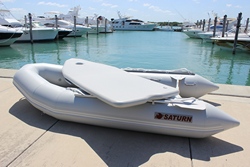
One of the key advantages of the High Pressure Air Deck is its lightweight nature, reducing the overall weight of the boat compared to boats with plywood or aluminum floors. This is particularly beneficial for novice boat owners, as it eliminates the cumbersome assembly process associated with hard floor options.
Additionally, most inflatable air decks can be easily removed from the deflated boat, facilitating transportation and storage. Some models even include a plywood board that fits into special pouches on the bottom of the floor. This board assists the air floor in pushing the inflatable keel down, forming a V-keel shape for improved performance. It also helps maintain the flatness of the top surface and provides extra cushioning for riders, reducing impact on knees and ankles.
Convenience is further enhanced by the inclusion of round openings across the bow area, allowing easy access to the keel valve without disassembling the entire boat.
While the High Pressure Air Deck boasts exceptional durability, caution must still be exercised to prevent punctures from sharp or jagged objects. To mitigate this risk, it’s recommended to add an additional layer of protection such as carpet or vinyl flooring, which can be sourced from local home improvement stores. This simple precaution ensures long-lasting enjoyment of your inflatable boat and air floor, providing peace of mind for your aquatic adventures.
Assess the boat’s purpose, the number of passengers, the type of water it will navigate, and storage and transportation needs. Balance size with manageability and consider how it aligns with your lifestyle and boating aspirations.
Regular cleaning with appropriate products, checking for and repairing punctures, proper inflation, and storing in a cool, dry place away from direct sunlight are essential. Also, follow the manufacturer’s guidelines for specific care instructions.
Regulations vary by region and can include registration, carrying safety equipment, and having boating licenses, especially for larger or motorized models. Always check and comply with local laws to ensure safe and legal boating.
Protect your boat from UV radiation, sharp objects, and extreme temperatures. Use, clean, and store it as per manufacturer recommendations, and conduct regular checks for wear and tear.
Yes, most punctures or tears can be repaired. Small punctures usually require a simple patch kit, while larger damages might need professional repair. Always carry a repair kit on board and familiarize yourself with the repair process before you head out.
Clean the boat thoroughly and ensure it’s completely dry before storage. Deflate it partially (never store fully inflated), fold it loosely to avoid creases, and store it in a cool, dry place away from rodents or pests. Additionally, avoid stacking heavy items on top of it to prevent any deformation.
PVC is lightweight, cost-effective, and suitable for calm, freshwater environments but may degrade faster under UV exposure. Hypalon, while more expensive, offers superior resistance to environmental elements, chemicals, and extreme temperatures, making it ideal for more rigorous or frequent use, especially in saltwater or sunny climates.


